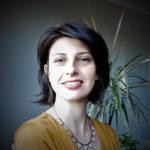Post facilitated by Melissa Harkin, PLD Blog Co-Editor
It has been a known fact for translators and translation theorists that language is a political tool. After WWII, translations started being studied and thought of as records and expressions of culture rather than as simple linguistic transpositions1. It can be said that translations can either be used to maintain the mainstream narratives of a given society or serve as a form of resistance and activism. From my part, I must admit that I only fully understood this when my work as a translator had to become clearly political.
My story with activist translation started with the autistic community. In 2014 I stumbled upon the community through their writings on the internet. By then, autism had been part of my life since 2008, when my son was diagnosed as autistic at eighteen months of age. During all those years I read everything I could find. I learned of different types of interventions, experimental treatments, and therapeutic approaches. But somehow it took me until that point to find the active, rich, and very much alive universe of autistic self-advocates and activists, and all the ideas, concepts, and new terms that they brought into the conversation. My translating project, in Portuguese, called “O autismo em tradução” (“Autism in Translation”), was born from my own sense of urgency to spread their message outside of the English-speaking world.
Different from what is usually called the “autism community,” which is composed of autism parents, teachers, health professionals, researchers, and therapists, the autistic community is formed by autistic people with the desire to speak for themselves, communicate their real needs, their views on how autism has been handled, and to spread their own autism narrative; thus, the term “self-advocates.”
Diving more and more deeply in that vast, new-found universe (at least new for me), my internal challenge became how to reconcile the elusive neutrality of the translator with a clear political stance. The conclusion I came to was that I could only accurately translate all levels of the group’s message if I were a proponent of it; otherwise, I would not understand the subtleties of their language. I became gradually more convinced that, to translate their message into a new language, I would have to become an activist or, since I am a non-autistic person, what I usually see myself as: an ally.
For starters, the whole movement was built on the concept of neurodiversity. Created in 1990’s by early autistic activists, the concept of neurodiversity represents “the infinite variation of neurocognitive function within the human species.”2From this emerged the concept of “neurotypicality” (which later gained mainstream credentials) and the words “neurodiverse” and “neurodivergent.”
Discussions on the use of “identity-first language” as opposed to “person-first language” are extensive within the community, with a strong preference being for the former. I will explain: autistic activists strongly encourage and even demand to be called “autistic” (identity-first language) instead of “person with autism” (person-first language). As has been said by some autistic activists, you would not bother to call a blond person a person with blondness unless you thought there were a fundamental problem with being blond.
The stigma of autism as a burden, as a disease to be eradicated, is what autistic people aim to wipe away, and to do so, language is a crucial tool. They know that how we speak about an issue ultimately shapes the way society views it. That’s why they advocate the use of the language of diversity instead of the language of pathology. I rigorously follow this guideline in my translations and my own discourse about autism.
The autistic community and the autistic movement are largely involved in politics. They are inserted in the larger and wide-ranging disabilities community. They are engaged in identity politics just as other minority groups are, and they often speak of the intersection of different identities: autistic while black, autism and feminism, autistic while non-gender normative, and so on. Their struggle is not isolated. It is very much in touch with a global trend of minorities demanding social justice, acceptance, and their voices to be heard. The internet has enormous influence as a stage where such conversations happen and in making such messages spread more broadly and quickly – translations included.
When I started my blog, there was no clear community yet in Brazil. There were some conversations taking place here and there, sometimes leaning in the same direction as the Neurodiversity Movement in English-speaking countries, but people didn’t have a common vocabulary or unifying concepts yet. The movement was not organized. Things have changed drastically since then. Although I know my blog was not the cause of this change, I like to think that it sparked conversations and provided some like-minded people with an important tool: a new, well thought-out vocabulary that allowed them to express their own thoughts.

Alexia Klein was born in Belo Horizonte, Brazil. She holds degrees in Pharmaceutical Sciences and History of Science, both from the Federal University of Minas Gerais (UFMG), Brazil, and a certificate in Translation from New York University (NYU), USA. She started working as a freelance translator in 2012 and specializes in the medical field.
Alexia is a member of the ATA and a current member of the Board of Directors of the New York Circle of Translators (NYCT).
Visit her blog at autismoemtraducao.com

Leave a Reply